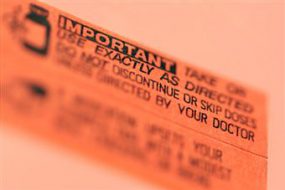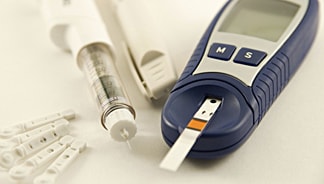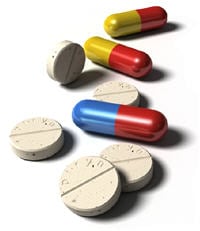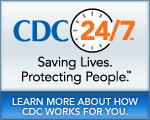Adverse Drug Events from Specific Medicines
Medicines are generally safe when used as prescribed or as directed by the label, but there are risks in taking any medicine. An adverse drug event is when someone is harmed by a medicine. Certain types of adverse drug events are more common for specific medication classes, such as low blood sugar (hypoglycemia) related to insulin use.
Antibiotics are one of the top medication classes resulting in emergency department visits for adverse drug events (ADEs). Based on data from 2013-2014, each year in the United States there are an estimated 200,000 emergency department visits for adverse events related to antibiotics [1].
- Overall, antibiotics are responsible for almost one in six (16%) estimated emergency department visits for ADEs.
- Antibiotics are involved in more emergency department visits for ADEs than any other class of drugs in patients under 50 years of age.
- In children 5 or younger, antibiotics cause more than half (56%) of estimated emergency department visits for ADEs.
- About four in five (82 percent) emergency department visits for ADEs from antibiotics alone are due to allergic reactions.

Antibiotics are one of the most prescribed medication classes in the United States, which contributes to the high number of emergency department visits for adverse drug events from these medications. But, even after accounting for how often antibiotics are prescribed, there is a substantial risk of an emergency department visit for an antibiotic-associated adverse drug event. From 2004-2006, there was approximately one in 1,000 risk that a person prescribed an antibiotic would require a visit to the emergency department because of an antibiotic side effect [2]. But it is estimated that there is only one in 4,000 chance that an antibiotic would prevent a serious complication from an upper respiratory infection [3]. An allergic reaction is the most common type of antibiotic-associated adverse drug event, so minimizing unnecessary antibiotic use is the best way to reduce the risk of adverse drug events from antibiotics.
References
- Shehab N, Lovegrove MC, Geller AI, Rose KO, Weidle NJ, Budnitz DS. US emergency department visits for outpatient adverse drug events, 2013-2014external icon. JAMA 2016;316:2115-25.
- Shehab N, Patel PR, Srinivasan A, Budnitz DS. Emergency department visits for antibiotic-associated adverse events. Clin Infect Dis 2008;47:735-43.
- Linder JA. Antibiotics for treatment of acute respiratory tract infections: decreasing benefit, increasing risk, and the irrelevance of antimicrobial resistance. Clin Infect Dis 2008;47:744-6.
Additional Information

Anticoagulants (blood thinners) are important for preventing and treating blood clots, but are associated with an increased risk for bleeding. Using anticoagulants safely requires a careful balance between risks and benefits.
Among older adults, oral anticoagulants are the most common causes of adverse drug events (ADEs) leading to emergency room visits and emergent hospitalizations. Oral anticoagulants include warfarin and the direct-acting oral anticoagulants (DOACs) such as apixaban, dabigatran, edoxaban, and rivaroxaban.
Each year between 2013 and 2014, warfarin was responsible for:
- 32% of estimated emergency room visits for all ADEs among older adults (≥65 years of age), and 36% of estimated emergent hospitalizations for all ADEs among older adults [1].
- Warfarin, rivaroxaban, and dabigatran were among the top 10 most common causes of ADEs resulting in emergency department visits among older adults [1].
In 2017:
- Bleeding from oral anticoagulants resulted in approximately 235,000 emergency department visits [2].
- Older adults (≥65 years of age) were involved in approximately 80% of DOAC-related bleeding visits and 77% of warfarin-related bleeding visits [2].
- DOACs contributed to approximately 40% of estimated oral anticoagulant bleeding visits [2].
Tip: To reduce the risk of anticoagulant-related bleeding, carefully follow your doctor’s advice about medication dosing, blood test monitoring, and diet, and do not discontinue your medication without first talking to your doctor.
References
- Shehab N, Lovegrove MC, Geller AI, Rose KO, Weidle NJ, Budnitz DS. US Emergency Department Visits for Outpatient Adverse Drug Events, 2013-2014. JAMA 2016;316(20):2115-2125.
- Geller AI, Shehab N, Lovegrove MC, Rose KO, Weidle NJ, Goring SK, Budnitz DS. Emergency Visits for Oral Anticoagulant Bleeding J Gen Intern Med 2019 Oct 29.
Additional Information
- Anticoagulation Stewardship, AC Forum
- Anticoagulant Therapy, Webinar Series, The Joint Commission
- Blood Thinner Pills: Your Guide to Using them Safely, Agency for Healthcare Research and Quality
Insulin is an important part of diabetes treatment, but it can be difficult for some patients to manage and monitor.

Insulin can cause adverse drug events that lead to emergency room visits.
From 2007 to 2011, nearly 100,000 estimated emergency department visits occurred each year in the U.S. for insulin-related low blood sugar (hypoglycemia) or errors when taking insulin. Of these emergency department visits:
- Nearly two-thirds of the patients had symptoms of severe hypoglycemia, such as shock, seizures, or loss of consciousness.
- Almost one-third of the emergency department visits resulted in hospitalization.
Older adults are most vulnerable to insulin-related hypoglycemia leading to emergency room visits.
One in every eight insulin-treated patients aged 80 years or older visited the emergency department for insulin-related hypoglycemia or errors. When compared to insulin-treated adults aged 45 to 64 years, those aged 80 years or older were:
- More than twice as likely to visit the emergency department for insulin-related hypoglycemia or an error when taking insulin.
- Nearly five times more likely to be hospitalized.
Meal-related mishaps and taking the wrong insulin product were the most common reasons for emergency room visits from insulin-related hypoglycemia or errors.
Meal-planning is a well-recognized component of diabetes education. However, among the emergency department visits with information on what caused the visit, a meal-related mishap was the most common factor in nearly half of the cases. Common meal-related mishaps include:
- Not eating shortly after taking rapid-acting insulin, such as insulin aspart or insulin lispro.
- Not adjusting insulin doses when eating less.
The second most common factor was patients taking the wrong insulin product, documented in nearly one-quarter of visits with information on what led to the visit. The most frequently reported type of product error was confusing rapid-acting and long-acting insulin products. In these cases, more than half the time a patient intended to take a long-acting insulin product (such as insulin detemir or insulin glargine) but took a rapid-acting one instead.
The number of Americans with insulin-treated diabetes has increased in the past decade.
It is important for patients to continue working with their doctors to safely and effectively manage their diabetes. Patient education should focus on meal-planning and the safe administration of insulin for the safest and most effective care. Balancing the risks with the benefits of diabetes treatment with insulin is now an important component of nationally-recognized diabetes treatment guidelines [PDF – 142 pages].
Tip: To reduce the likelihood of hypoglycemia, plan meals and pay close attention to the insulin products administered.
Reference
- Geller AI, Shehab N, Lovegrove MC, Kegler SR, Weidenbach KN, Ryan GJ, Budnitz DS. National estimates of insulin-related hypoglycemia and errors leading to emergency department visits and hospitalizations. JAMA Intern Med2014;174:678-86.
Additional Information

In the United States, the use of opioid (narcotic) analgesics (pain-relievers) as part of pain management regimens has contributed to a poisoning epidemic. The increase in drug poisoning coincides with an increase in the prescription of major types of opioid analgesics, as physicians were encouraged to prescribe stronger analgesics (i.e., opioids) for pain management. When sales of opioid analgesics increased, the occurrences of opioid analgesics on death certificates increased at a similar rate. In 2013, the rate of drug poisoning deaths involving opioid analgesics remained higher than the rate for deaths involving heroin, but the rate of deaths involving heroin had almost tripled from 2010. The overall goal should be to identify ways to reduce deaths from opioid analgesics without reducing the quality of care for patients who legitimately need pain management. The CDC Clinical Practice Guideline for Prescribing Opioids for Pain provides recommendations for safer prescribing of opioids among adults in primary care settings.
References
- CDC Prescription Drug Overdose: Data Overview. Available at: Drug Overdose Data Dashboards & Alerts
- CDC Guideline for Prescribing Opioids for Chronic Pain — United States, 2016. Available at: https://www.cdc.gov/mmwr/volumes/71/rr/rr7103a1.htm
Additional Information
- Opioids, CDC
- Articles on adverse drug events from opioid analgesics, CDC
- Opioid Painkiller Prescribing, CDC Vital Signs July 2014
- Drug Overdose Deaths in the United States, 1999–2020, CDC
- Trends and Geographic Patterns in Drug and Synthetic Opioid Overdose Deaths — United States, 2013–2019, CDC
- Nonfatal Drug and Polydrug Overdoses Treated in Emergency Departments — 29 States, 2018–2019, CDC
- Checklist for prescribing opioids for chronic pain, CDC
